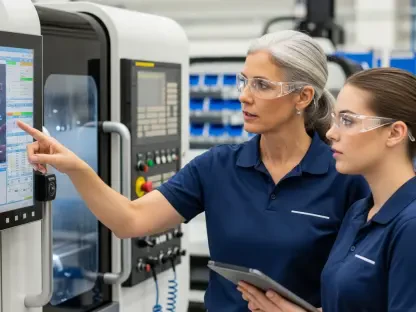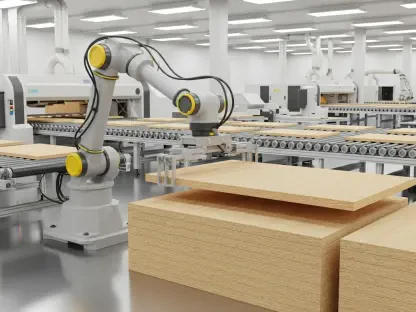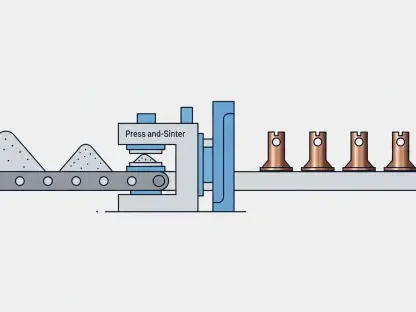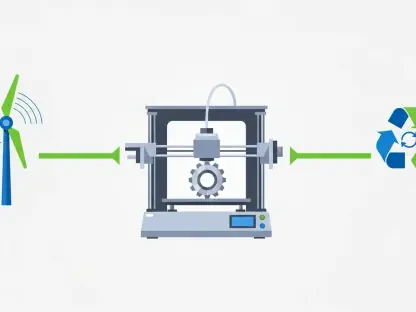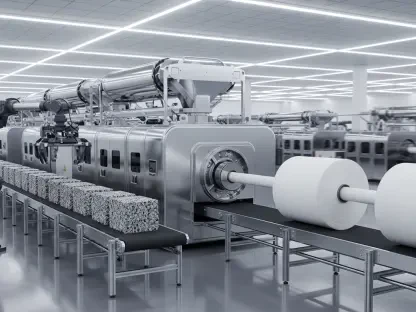The automotive industry is a fascinating realm of continuous innovation and intricate engineering. From the robustness of auto glass to the latest advancements in vehicle technology, there are numerous aspects that often go unnoticed by the average car owner. This article delves into some of the most intriguing facts about automobiles, shedding light on the technological and safety advancements that define modern vehicles.
The Strength and Importance of Auto Glass
Engineering Precision in Auto Glass
Auto glass is more than just a transparent barrier between the driver and the outside world. Typically, car windows are about 5 mm thick, a specification that ensures they can withstand significant pressure and impacts. This thickness is crucial for passenger protection and the vehicle’s structural integrity. The manufacturing process of auto glass involves advanced engineering techniques to create a product that is both durable and clear, highlighting the precision required in automotive design.
The advanced engineering of auto glass goes beyond just thickness. Laminated safety glass is commonly used for windshields, consisting of two layers of glass with a thin layer of polyvinyl butyral (PVB) sandwiched between them. This construction enables the glass to stay intact even when shattered, preventing shards from causing injury. Tempered glass, used for side and rear windows, undergoes rapid heating and cooling to enhance its strength, ensuring that it breaks into small, less harmful pieces rather than large, dangerous shards. Such meticulous engineering underscores the importance of auto glass in ensuring passenger safety and vehicle longevity.
Safety and Structural Support
The role of auto glass extends beyond visibility. It contributes to the overall safety of the vehicle by providing structural support, especially in the event of a rollover accident. The strength of the glass helps maintain the car’s shape and protects passengers from being ejected. This dual function of visibility and safety underscores the importance of high-quality auto glass in modern vehicles.
A car’s windshield, for instance, is designed to work in concert with the vehicle’s airbags during a collision. The strength and structural integrity provided by the laminated windshield help the airbags deploy in the correct position, thereby offering maximum protection to the occupants. Additionally, in the event of a rollover, the windshield and side windows contribute to the overall rigidity of the roof, helping to keep it from collapsing and protecting the passengers inside. This multi-faceted role of auto glass in both enhancing safety and supporting the structural design of vehicles highlights the critical importance of using high-quality materials and precise engineering in its manufacture.
Environmental Impact and the Rise of Electric Vehicles
Traditional Cars and Environmental Concerns
Traditional gas-powered vehicles have long been a staple of the automotive industry, offering convenience and mobility. However, they also pose significant environmental challenges due to fuel consumption and emissions. Automobiles contribute significantly to air pollution, releasing carbon dioxide (CO2), nitrogen oxides (NOx), and particulate matter into the atmosphere, which negatively impacts air quality and contributes to global warming.
The environmental footprint of traditional cars extends beyond emissions. The extraction and processing of fossil fuels also result in significant environmental degradation. From the drilling and transportation of crude oil to its refining and distribution, each step in the fossil fuel supply chain has substantial ecological implications. These concerns have driven the automotive industry’s move toward more sustainable options, emphasizing the need to reduce reliance on gasoline and diesel, not just to improve air quality but also to mitigate broader environmental impacts.
Electric Vehicles and Hybrid Cars
In response to environmental concerns, the automotive industry has seen a rise in electric vehicles (EVs) and hybrid cars. These alternatives promise to reduce carbon footprints and improve air quality. Electric vehicles, which run solely on electricity stored in batteries, produce zero tailpipe emissions, contributing to cleaner urban environments and reducing reliance on fossil fuels.
Hybrid vehicles combine a traditional internal combustion engine with an electric motor, offering improved fuel efficiency and reduced emissions compared to conventional gas-powered cars. However, while electric and hybrid vehicles present a greener alternative, their production, especially the manufacture of batteries, raises environmental considerations. Lithium-ion batteries, commonly used in EVs, require mining of raw materials like lithium, cobalt, and nickel, processes that can cause significant ecological harm. The energy-intensive production and recycling of these batteries also contribute to their environmental footprint. Balancing these factors is essential in understanding the overall impact and potential of green automotive technologies.
Road Safety and Accident Statistics
The Impact of Car Accidents
Car accidents remain a significant public health concern, with fatalities and serious injuries occurring frequently. The sobering statistics, such as data from Georgia’s Department of Public Health which reported that automobile crashes resulted in the highest number of fatalities in the state for 2020, underscore the ongoing importance of road safety measures and driving awareness.
The impact of car accidents extends beyond loss of life; they also have substantial economic and psychological repercussions. Medical costs, vehicle repairs, and lost productivity due to accidents impose a heavy financial burden on individuals and society. The trauma of surviving a serious collision can lead to long-term psychological issues, such as post-traumatic stress disorder (PTSD), affecting the quality of life of the victims. These multifaceted consequences highlight the critical need for continuous improvements in road safety measures and the adoption of advanced vehicle technologies to reduce the frequency and severity of accidents.
Enhancing Vehicle Safety Features
To combat the high rate of accidents, modern vehicles are equipped with advanced safety features. These include airbags, anti-lock braking systems (ABS), and electronic stability control (ESC). The implementation of these technologies aims to reduce the severity of accidents and protect passengers, reflecting the industry’s commitment to enhancing road safety.
Recent advancements have introduced features such as advanced driver-assistance systems (ADAS), which include adaptive cruise control, lane departure warnings, and automatic emergency braking. These systems are designed to assist the driver in making safer decisions and reacting more quickly to potential hazards. For example, forward-collision warning systems can alert drivers to an imminent crash, while automatic emergency braking can intervene to prevent or mitigate the impact. Incorporating such innovative safety features into vehicles exemplifies the industry’s dedication to leveraging technology to save lives and reduce injuries on the road.
Financial Aspects of Car Maintenance
Cost of Regular Maintenance
Owning a car comes with financial responsibilities, particularly in terms of maintenance. Regular services such as oil changes, tire rotations, and brake inspections are essential for the vehicle’s longevity and optimal performance. On average, car owners might spend between $95 and $237 per visit for these basic services. Understanding and planning for the cost of maintenance can help prevent unexpected repairs and ensure that the vehicle remains in good working condition.
Budgeting for regular maintenance is crucial in avoiding more costly issues down the road. For instance, neglecting regular oil changes can lead to engine wear and tear, significantly decreasing the vehicle’s lifespan. Similarly, failing to rotate tires can result in uneven wear, affecting the car’s handling and safety. By setting aside funds for routine maintenance, car owners can ensure their vehicles perform efficiently and safely, thereby extending the life of their investment.
Long-Term Benefits of Maintenance
Investing in regular maintenance not only ensures the vehicle’s performance but also extends its lifespan. Proper upkeep can prevent major issues that could lead to costly repairs down the line. Regularly checking and replacing worn-out components, such as brake pads and timing belts, helps maintain the vehicle’s reliability and safety. This proactive approach to car care highlights the value of consistent maintenance in preserving the vehicle’s health and functionality.
Moreover, a well-maintained vehicle tends to have a higher resale value. Prospective buyers are more likely to pay a premium for a car with a documented history of regular maintenance, ensuring that it remains an attractive option in the pre-owned market. In addition, a vehicle that receives consistent care will typically offer better fuel efficiency and lower emissions, contributing to both the owner’s cost savings and a reduced environmental footprint. These long-term benefits underscore the importance of viewing vehicle maintenance as an integral part of responsible car ownership.
Technological Innovations in the Automotive Industry
Advancements in Self-Driving Technology
One of the most exciting developments in the automotive industry is the advent of self-driving cars. These vehicles are equipped with sophisticated sensors and algorithms that allow them to navigate roads with minimal human intervention. While fully autonomous cars are still in development, features like adaptive cruise control and lane-keeping assist are already becoming common in newer models. These advancements promise to revolutionize the driving experience, offering enhanced safety and convenience.
Self-driving technology relies on an array of sensors, including radar, lidar, and cameras, to interpret the vehicle’s surroundings. Advanced software processes this data in real-time to make decisions about driving behavior, such as maintaining speed, changing lanes, and avoiding obstacles. Although there are still regulatory and technological challenges to overcome, the progress in autonomous vehicle development signals a future where driving may become significantly safer and more efficient, potentially reducing human error that contributes to many traffic accidents.
Enhanced Driver Assistance Features
The automotive industry is a realm of endless fascination, marked by continuous innovation and complex engineering. From the strength and durability of auto glass to groundbreaking advancements in vehicle technology, numerous aspects are often overlooked by the average car owner. Automobiles are not just a means of transportation; they embody engineering marvels. Every component, from the smallest bolt to the most intricate onboard computer systems, plays a vital role in the overall performance and safety of the vehicle. Modern cars are equipped with state-of-the-art technology designed to enhance safety, comfort, and efficiency. Features such as advanced driver-assistance systems (ADAS), automatic emergency braking, lane-keeping assistance, and adaptive cruise control represent the pinnacle of automotive innovation. Additionally, today’s cars are built with materials that are not only lightweight but also exceptionally strong, contributing to both fuel efficiency and occupant safety. This article explores some of the most intriguing facts and technological advances that define contemporary vehicles, offering insight into the sophisticated world of modern automobiles.


